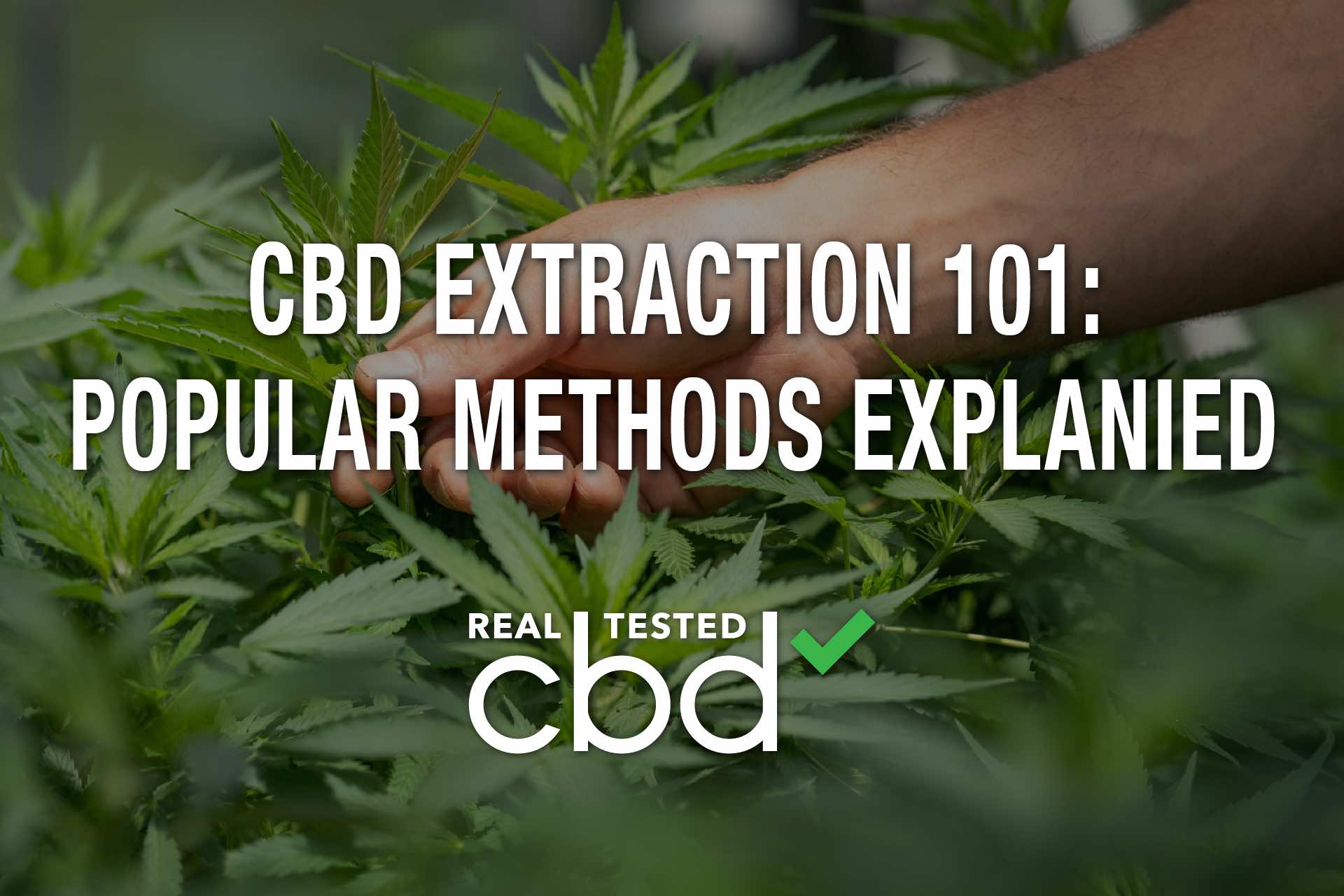
This article was originally published on Real Tested CBD. To view the original article, click here.
Not all CBD is created equal. The quality of a CBD product starts at the seed, moves to the way a hemp plant is grown and finishes with the method of extraction. Finding a high-quality CBD product that you can rely on will leave you with a few things to factor in, one of them being the method of extraction used for your CBD product.
The growing popularity of CBD is ever on the rise as its potential benefits become more mainstream. CBD is produced and made into a variety of products like edibles, topicals, and oils – each offering a different form of potential relief.
Knowing where your product came from and how it was manufactured will give you a better idea of what CBD products will actually work for you. Quality, purity and potency all can depend on the method of extraction. So let’s break down what you should be looking for:
What Is CBD Extract?
First, let’s define what a CBD extract actually is. CBD, also known as cannabidiol, is one of many natural compounds found in hemp and cannabis sativa plants. CBD extract refers to the process and form that comes from extracting the sought after cannabinoids from the plant. With consideration to the extraction process, we also have to consider the different spectrums of CBD that can result: broad-spectrum, full-spectrum and isolate. A CBD extract, in simple terms, is what is extracted from hemp and cannabis sativa plants, to then be manufactured into consumable or appliable products.
Why Must We Extract?
Extraction is necessary to make usable CBD products. When CBD is extracted from hemp and cannabis plants it is in the form of a concentration, which is effective for human use. This concentrated extract is only useful because of the decarboxylate process (application of heat). When ingesting cannabinoids through a capsule, edible or oil, the decarboxylation is needed for our bodies to absorb the active ingredients. On the other hand, dried cannabis and hemp can partially decarboxylate, and if smoked (aka, heated) the cannabinoids get fully decarboxylated.
Three Common Methods Of Extraction
- Carbon Dioxide (CO2) Extraction – Today, CO2 extraction has become the most popular, efficient and reliable method of extraction for CBD companies. CO2 extraction uses supercritical CO2 to separate the CBD from the plant materials. Supercritical CO2 refers to carbon dioxide that is between a gas and a liquid state. This extraction method includes multiple pressurized chambers that funnel and pump the CO2, exposing it very high pressure and low temperatures which results in an extracted oil high in CBD. During this process, CO2 is pumped from the first chamber to the second, which contains the hemp plant that is then exposed to the supercritical CO2. This exposure breaks down the hemp plant material, causing the oil to separate. From there, the CO2 and oil are funneled together into a third chamber. The gas form then evaporates, leaving behind an extract of pure CBD oil that can be manufactured into a variety of products. This method of extraction can consistently produce high-concentration CBD with no toxic residue leftover.
- Steam Distillation – Steam distillation is a tried and true method of CBD extraction. This method entails a ‘plant material’ distillation tank with an inlet and outlet. The distillation tank is connected to a separate tank containing water through the inlet, which is situated below the distillation tank. The outlet of the distillation tank connects to a condensing tube which deposits into a collecting flask. For this process, water is heated to a boil in the first tank. The steam then travels upward to the plant material tank, separating the oil vapors containing CBD. These vapors are captured in the condensing tube that turns them to oil and water. These liquids are then collected to be distilled, separating the CBD oil from the water. Steam distillation is reliable, but can be less effective for extracting specific CBD concentrations and requires the use of more plant material per extraction.
- Solvent Extraction – With a solvent extraction, the methodology is similar to that of steam distillation, but instead a solvent is used rather than water. Solvent extraction can be more efficient that steam distillation, but does come with some risks. A solvent extraction includes the use of butane, alcohol, propane or compound more natural like olive oil or ethanol to extract the CBD. Plant materials are combined or soaked with a solvent, stripping the cannabinoids. Next is the evaporation process, where the solvent used evaporates and leaves behind a concentration of cannabinoids in oil form. Besides the use of potentially dangerous and flammable solvents during the process effecting its popularity, the residue of solvents may not be fully evaporated in the final step, leaving potentials toxins behind in your CBD.
Which Extraction Method is Best?
While each extraction method will have its pros and cons, the one that overwhelmingly presents less cons is the CO2 extraction method. Though it can be more costly for CBD companies, it creates the most reliable and concentrated form of CBD. With no toxic residues, high concentrations and the overall safety of the extraction method, CO2 extraction is the preferred method.
Recently, companies like Tribe CBD have even turned to a more natural extraction method, through lipid extraction. This method uses a natural oil, like MCT oil, and a highly pressurized environment to extract CBD from plant material. For more information on Tribe’s unique methods, check here.
Advertising disclosure: We may receive compensation for some of the links in our stories. Thank you for supporting LA Weekly and our advertisers.

